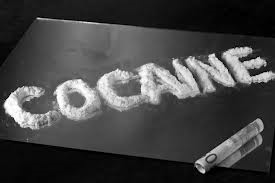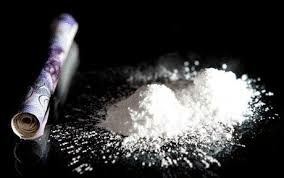Cocaine, a powerfully addictive, psychoactive, stimulant drug, is derived from the processed leaves of the cocoa plant. Cocaine can be used by being snorted, smoked or injected. Cocaine does not produce a physical dependence like heroin or benzodiazepines but it can be very psychologically addicting as it increases the amount of dopamine in the central nervous system and activates the brain’s reward circuit. In this way, cocaine is potent brain stimulant and one of the most powerfully addictive drugs.
Cocaine rose to prominence in the 1980’s as the world’s most popular recreational drug. It was powerful, cheap and plentiful. It walked hand-in-hand with the rising economy and fast money of young professionals. Later on, with the emergence of even more cheap and more plentiful crack cocaine, the drug affected every social class. However, way before the glitz and glamour of the 80’s, cocaine was being hailed as a “wonder drug” by some of the world’s greatest minds, including Sigmund Freud and the pioneering surgeon William Halsted. According to historian Dr. Howard Markel, it was even promoted by the likes of Thomas Edison, Queen Victoria and Pope Leo XIII. Cocaine has been hailed as a medical marvel, a psychological treatment breakthrough and a important helper for those that want to club and party all night or stay awake to study. It is a well-known alcoholic support that lets people stay awake much longer to drink more. It has also contributed to the deaths of well-known University of Maryland star basketball player Len Bias, The Who bass player John Entwistle, and actor/comedian John Belushi.
Here is some other important information regarding the drug cocaine:
FACTS:
- Cocaine is a Schedule II narcotic
- Cocaine is an extraction of the leaves of the Erythroxylon coca bush, which is indigenous to the Andean highlands of South America
- Cocaine is the most powerful central nervous stimulant found in nature
- Coca leaves, the source of pure cocaine, have been chewed and ingested for thousands of years for the euphoric effects of the drug. They were first used by members of the Inca civilization in the Andes mountains, who believed the coca plant was a gift from the gods
- Cocaine was first used in the U.S. in the 1880s, where it was applied as an anesthetic in eye, nose, and throat operations. This use has since become obsolete with the development of safer drugs
- The soft drink Coca-Cola originally contained an estimated nine milligrams of cocaine per serving, which combined with caffeine to create the drink’s powerful stimulating effects
- Cocaine was first regulated under federal law by the Harrison Act of 1914. The act banned nonmedical use of the drug and imposed the same criminal penalties for cocaine use and possession as already in place for opium, morphine, and heroin
STATISTICS:
- Approximately 35.9 million Americans aged 12 and older have tried cocaine at least once in their lifetime, according to a national survey, and about 2.1 million Americans are regular users
- The high from snorting cocaine may last 15 to 30 minutes; the high from smoking may last 5 to 10 minutes
- Drug enforcement personnel estimate that about 2,500 Americans every day try cocaine for the first time
- In 2008, nearly 50,000 kilos of cocaine were seized in the U.S. during drug arrests. The wholesale street value of this amount of cocaine was approximately $1.5 billion
- The highest rates of cocaine use in the U.S. are among adults aged 18 to 25, with about 5% of Americans in this age group admitting current use of the drug
- More than 400,000 babies are born addicted to cocaine each year in the U.S
- Cocaine overdose is the most common reason for drug-related visits to the emergency department in the U.S., causing 31% of such visits. In 1978, cocaine accounted for only 1% of drug-related emergency room visits
- Approximately 15-20% of people who begin using cocaine will immediately progress to serious, heavy use of the drug
EFFECTS:
- Short-term effects of cocaine include constricted peripheral blood vessels, dilated pupils, increased temperature, heart rate, blood pressure, insomnia, loss of appetite, feelings of restlessness, irritability, and anxiety
- Cocaine’s immediate euphoric effects include energy, reduced fatigue and mental clarity
- These euphoric effects depends on the method of use. The faster the absorption, the more intense the high. However, the faster the absorption, the shorter the high lasts
- The effects of cocaine are short lived and once the drug leaves the brain the user often experiences an emotional and physical crash, including depression, irritability and fatigue as well as restlessness and increased anxiety
- Intense cravings once use begins
- Long term use of cocaine can trigger paranoia
- Prolonged cocaine snorting can result in ulceration of the mucous membrane of the nose
- Long term effects include permanent damage to blood vessels of heart and brain, high blood pressure, leading to heart attacks, strokes, and death, liver, kidney and lung damage, respiratory failure if smoked, infectious diseases and abscesses if injected, malnutrition, weight loss, severe tooth decay, auditory and tactile hallucinations, sexual problems, reproductive damage and infertility (for both men and women), disorientation, apathy, confused exhaustion, increased frequency of risky behavior, delirium or psychosis, severe depression, tolerance and addiction
TREATMENT FOR COCAINE ADDICTION OR COCAINE ABUSE
Treatment for cocaine addiction or cocaine abuse does not often include a need for a medical detoxification. The drug stays in a users body between 24-72 hours but the physical effects subside very quickly after last use. Therefore, little of a typical detox is necessary. Treatment will include behavioral interventions, including cognitive-behavioral therapy, as well as other evidence-based treatment. Individual and group therapy and counseling would be utilized. However, the same comprehensive addiction treatment used for any person suffering from substance abuse would be used. A holistic approach that looked at the substance abuse, the underlying causes and conditions, emotional state, character pathologies, family dynamics would be examined, assessed and treated. The successful addiction treatment paradigm of medical treatment, psychotherapeutic treatment and social services/vocational counseling combined into one integrated approach would be used to treat cocaine abuse and addiction.
If you or someone you know is suffering from cocaine abuse or cocaine addiction or any other issues with drugs and alcohol, please call us for help. Maryland Addiction Recovery Center offers the most comprehensive addiction treatment in the area. Please call us at (410) 773-0500 or email info@marylandaddictionrecovery.com. For more information on all of our addiction treatment services and resources, please visit the web site at www.marylandaddictionrecovery.com.
Informational links used for this blog and additional information on marijuana are listed below:
https://www.drugfree.org/drug-guide/cocainecrack


